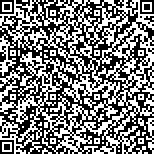席建明,王慧灵,李瑞青,等.神经肌肉关节促进技术联合浮针治疗脑卒中后肩关节半脱位伴肩痛的疗效观察[J].中华物理医学与康复杂志,2021,43(5):401-405
扫码阅读全文

|
| 神经肌肉关节促进技术联合浮针治疗脑卒中后肩关节半脱位伴肩痛的疗效观察 |
|
| |
| DOI:10.3760/cma.j.issn.0254-1424.2021.05.004 |
| 中文关键词: 脑卒中 肩关节半脱位 肩痛 神经肌肉关节促进技术 浮针 |
| 英文关键词: Stroke Shoulder subluxation Shoulder pain Floating needle therapy Neuromuscular joint facilitation |
| 基金项目:河南省中医药科学研究专项课题(2018JDZX082,2019ZY2129);中医康复规范化服务能力建设项目(210061);河南省中医临床学科领军人才培育专项(2018YS0075) |
|
| 摘要点击次数: 5949 |
| 全文下载次数: 8364 |
| 中文摘要: |
| 目的 观察神经肌肉关节促进技术(NJF) 联合浮针治疗脑卒中后肩关节半脱位伴肩痛患者的临床疗效。 方法 采用计算机随机数字法按照1∶1∶1比例将39例脑卒中后肩关节半脱位伴肩痛患者分为NJF组、浮针组和联合组,每组13例,3组患者均接受防治肩关节半脱位及肩痛的常规康复治疗方案(包括良肢位摆放、物理疗法活动和主被动运动训练,通过渐进性训练提高上肢活动能力,并在站立或行走时合理使用肩托保护患肩),在此基础上,NJF组加用NJF治疗,浮针组加用浮针治疗,联合组加用NJF联合浮针治疗,各组治疗均为每日1次,每周6 d,共治疗4周。分别于治疗前和治疗4周后(治疗后),采用超声法测量患者的肩峰大结节间距(AGT)评定3组患者的肩关节半脱位程度,采用目测类比法(VAS)和简化Fugl-Meyer评估量表(FMA)评定3组患者的肩痛程度及其上肢运动功能;并依据治疗后患者肩关节半脱位伴肩痛症状的改善程度对3组患者的治疗效果(总有效率)进行评估。 结果 治疗前,3组患者的AGT值及VAS和FMA评分组间比较,差异均无统计学意义(P>0.05)。治疗后,3组患者的AGT值及VAS和FMA评分均较组内治疗前有明显改善(P<0.05),且联合组治疗后的AGT值及VAS和FMA评分[(14.76±3.13)mm及(3.61±6.65)和(34.15±4.93)分]显著优于NJF组[(17.62±1.85)mm、(2.84±0.80)和(20.92±3.40)分]和浮针组[(18.90±2.69)mm、(4.31±1.18)和(22.53±4.64)分],组间差异有统计学意义(P<0.05)。治疗后,联合组经临床治疗改善肩关节半脱位伴肩痛症状的总有效率达到84.6%,明显高于NJF组(53.8%)和浮针组(61.5%),组间差异有统计学意义(P<0.05)。 结论 常规康复治疗基础上联合NJF和浮针疗法可以显著改善脑卒中后肩关节半脱位伴肩痛的症状和上肢运动功能。 |
| 英文摘要: |
| Objective To observe the clinical efficacy of combining neuromuscular joint facilitation (NJF) with floating needle treatment in treating stroke survivors with painful shoulder subluxation. Methods Thirty-nine stroke survivors with painful shoulder subluxation were randomly divided into an NJF group, a floating needle group and a combination group, each of 13. In addition to the basic treatment for shoulder subluxation and pain (including positioning, physiotherapy, active and passive motor function training, progressive training of the upper limbs, and using shoulder pads to protect the affected shoulders when standing or walking), the 3 groups were also given NJF, floating needle therapy or both as their group names imply six days per week for 4 weeks. Shoulder subluxation was evaluated using ultrasonography to measure the acromion-greater tuberosity distance (AGT). Pain was self-reported using a visual analogue scale. And the Fugl-Meyer assessment (FMA) was applied to quantify the treatments′ efficacy. Results Before the treatment, no significant differences were found among the 3 groups in terms of their average AGTs, pain ratings or FMA scores. Afterward, significant improvement was observed in all of the measurements in all 3 groups, with the combination group′s average results significantly better than those of the other two. The combination group′s overall effectiveness was 85%, significantly better than that of NJF group (54%) and the floating needle group (62%). Conclusions Floating needle treatment combined with NJF and routine rehabilitation can significantly improve motor functioning and relieve the pain of shoulder subluxation after a stroke. |
|
查看全文
查看/发表评论 下载PDF阅读器 |
| 关闭 |